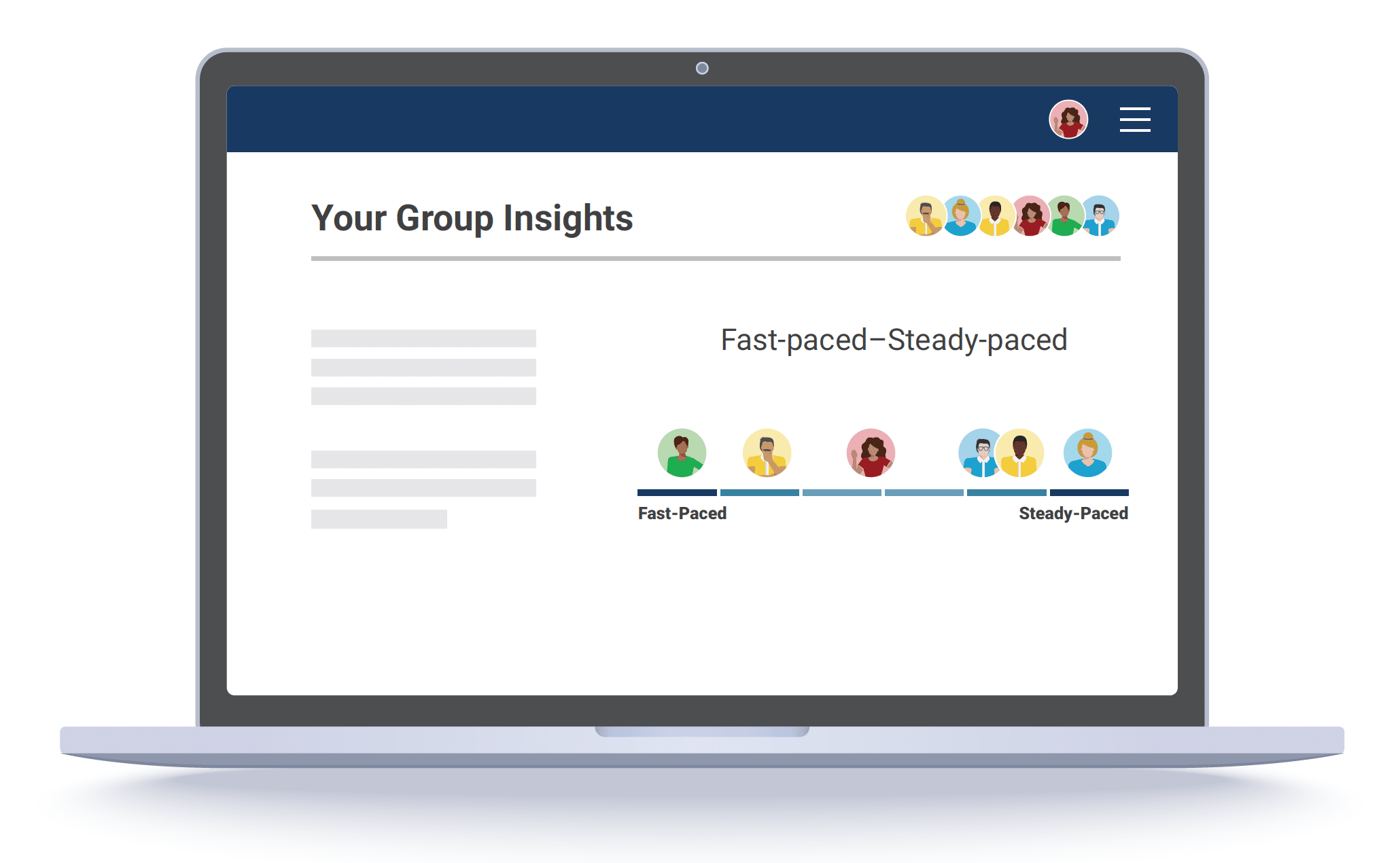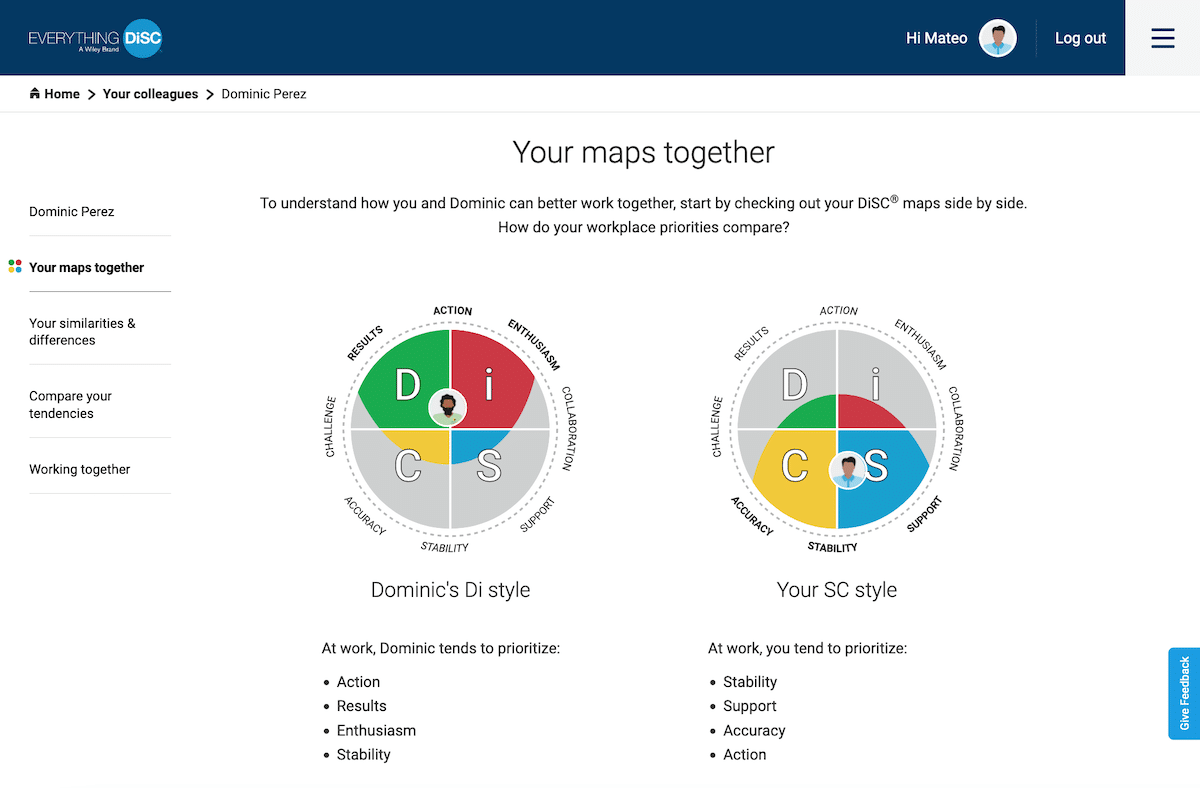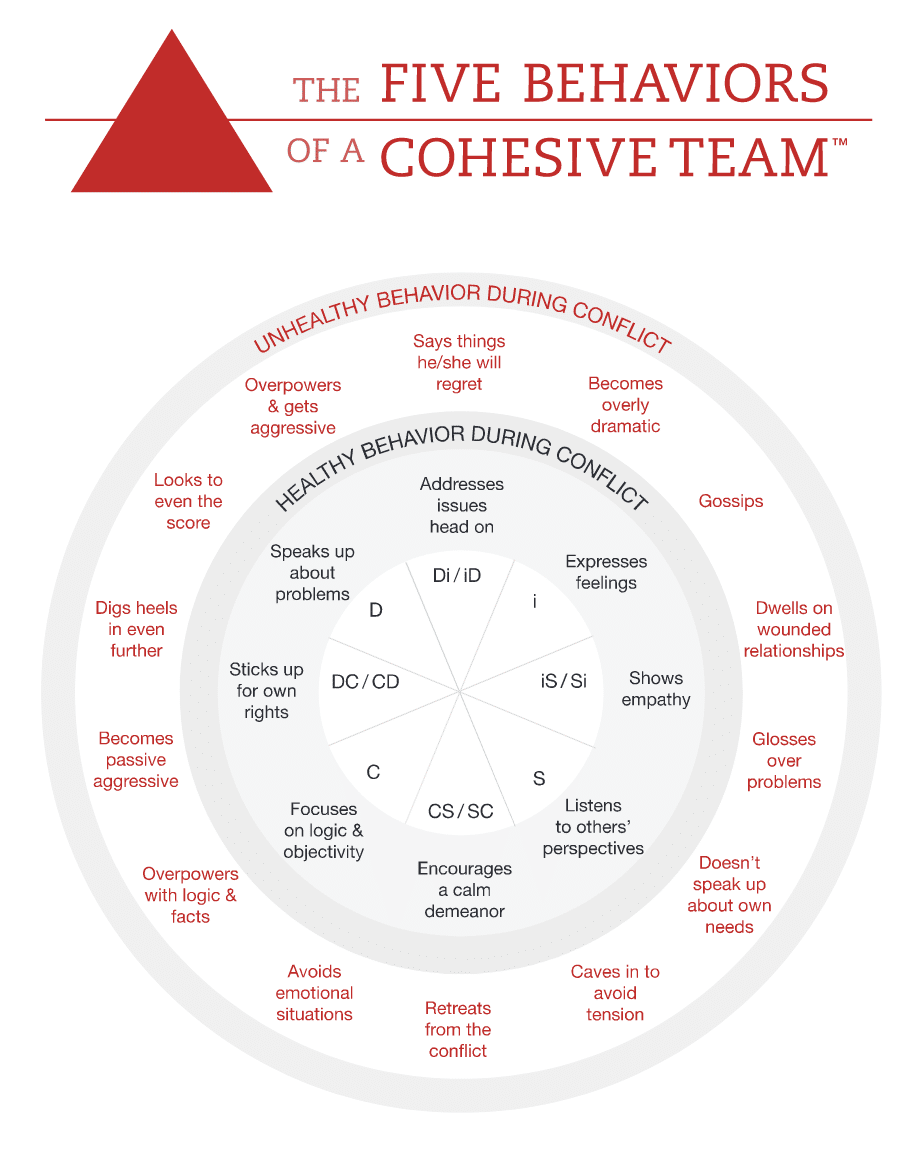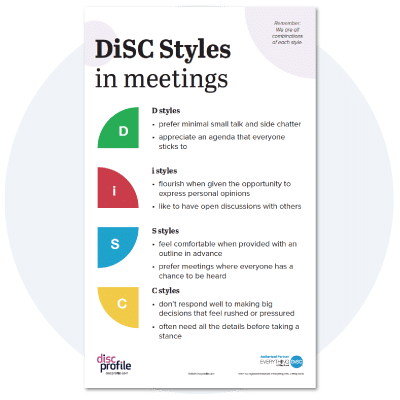When meetings are bad, or even just blah, they feel like mere obligations or distractions from our “real work.” In fact, 73 percent of people use meeting time to do other work.
The time lost to a bad meeting goes beyond the meeting’s duration. There is transition time before and after, as well as the possibility of lingering “meeting recovery syndrome.”
Meeting recovery syndrome is the fatigue that follows an irritating meeting, the decompression period before you’re able to regain focus.
If meetings are so universally dreaded, can we just do away with them? That would be a mistake, according to Patrick Lencioni, author of Death by Meeting. He recommends four different types of meetings:
- Daily five-minute check-in to share daily schedules
- Weekly tactical
- Monthly strategic
- Quarterly off-site review
Lencioni believes meetings can be environments of engagement and passion. Do you? If you lead meetings, one way to hone your approach is by considering the DiSC styles of the individuals and groups you’re working with. Here are some ideas for using DiSC for better meetings.
#1: Understand the communication styles and preferences of your team members.
If you use DiSC in your workplace, refer to Catalyst or your Group Report. Notice the DiSC styles of the individuals who attend your meeting, as well as what the balance of styles is for the group as a whole.

On Catalyst, the group continua show where team members fall on tendencies like “accommodating to strong-willed” and “structured to unstructured,” even if those preferences are outside their style.
If your workplace does not yet use DiSC, you can still practice people-reading as a way to think about the variety of personality styles in your group and what may motivate or stress out each group member. Review the DiSC styles here.
Though individuals vary within styles, there are some general preferences. Here’s what the different DiSC styles prefer during meetings:
- People with D styles prefer minimal small talk and side chatter. They appreciate an agenda that everyone sticks to.
- People with i styles flourish when given the opportunity to express personal opinions. They like to have open discussions with others.
- S-style folks feel comfortable when provided with an outline in advance. They prefer meetings where everyone has a chance to be heard.
- C-style people don’t respond well to making big decisions that feel rushed or pressured. They often need all the details before taking a stance.
#2: Adapt your communication style.
The communication style your team needs from you may differ from your natural tendencies. This doesn’t mean you have to become a completely different person around them. It just means you may find benefit in stretching your style a bit during meetings. For example, if your team has mostly D-style people, you’ll likely want to be concise and direct with them, even if that is not your natural tendency. Or, if your team is largely S styles, you’ll want to create a warm and supportive environment, allowing them time to express their thoughts. Depending on your own style, this may be easy or may require a bit more energy from you.
Using the tools of DiSC, you can remain true to your own personality even while you find ways to flex into other styles for the benefit of the group.
#3: Set the tone.
When people arrive early to a virtual, hybrid, or in-person meeting, they will often chat until the meeting starts. This can be an important social time for teams. But you must be thoughtful about the transition from pre-meeting to meeting. If this transition is blurry, the people who warmed up by chatting beforehand may continue to be more talkative during the meeting. In contrast, folks who arrive as the meeting begins may not even receive a greeting, because the pre-meeting-to-meeting transition is unclear. These folks will likely be less engaged during the meeting.
How can you mark the beginning of the meeting in a way that welcomes everyone—whether in the room, on the phone, or on-screen—and primes them for engagement? A short opening question, icebreaker, or pair-and-share discussion makes sure the more reserved team members speak early in the meeting, making it more likely they will continue to speak as the meeting continues.
Provide clear agendas and goals.
The beginning is also a good time to clarify the meeting’s goals, agenda, and length. Clarity of purpose is especially reassuring to your team members who need more structure or who are goal-oriented, but really, people of all personality styles appreciate this information. If possible, distribute agendas in advance, so participants can come prepared. (Your C-style team members will thank you.) It’s difficult to have a focused and productive meeting if the attendees don’t know what they’re trying to accomplish.
#4: Aim for balanced participation.
There will always be some people who speak more than others at meetings, or people more diligent in preparing for group discussions or creating follow-up plans. But your goal as a meeting leader is to foster participation in different ways so that everyone can comfortably contribute their ideas and expertise.
Some examples:
- C and S styles don’t like to be put on the spot. Let them know what decisions will be made at the meeting so they can prepare their thoughts in advance. Or, rather than bringing up a new topic and right away opening it for discussion, introduce the topic and then ask everyone to take a few minutes to write down their thoughts in silence before the discussion starts.
- D-style people tend to become impatient when they feel the team is rehashing an issue that has already been resolved, or when time is being wasted in another way. Try setting a time limit for each agenda item. Be alert to times when the conversation starts to feel circular or repetitive, and move it along. When ending a discussion, sum up the decision that was made, what will happen next, and how quickly. Be clear about what decisions are final, what conversations are ongoing, and what tasks and deadlines have emerged over the course of the conversation.
- People with i styles value relationships, social opportunities, novelty, and collaboration. If they feel they’re attending the same rote meeting every week, with the same go-around-and-give-updates routine, they will become disengaged. Mix things up, ask for their creativity, and find opportunities for personal connection during meetings.
As a meeting facilitator, you likely have a meeting style you’re most comfortable with. You default to a certain type of meeting based on your own personality style and preferences. You’ll need to stretch into other styles to create an inclusive environment where everyone feels comfortable sharing their ideas and opinions, regardless of their DiSC profile.
Read more: Facilitation tips for D-style, i-style, S-style, and C-style facilitators.
#5: Use the language of DiSC in discussions.
When a workplace has a culture of DiSC, it has a common language. DiSC provides a framework for team members to provide feedback to one another in a constructive and respectful manner. Encourage team members to stay rooted in DiSC when collaborating and debating. Review DiSC concepts regularly with your team so they are able to call upon this tool during meetings.
The “Your colleagues” section of Everything DiSC on Catalyst is a rich resource that empowers team members to work more effectively and authentically with their teammates. Teammates can look at this section together and discuss how their similarities and differences affect the team. They can see the benefits of having different styles on the team, and gain tips for working together.

#6: Foster productive conflict.
In meetings, conflicts can arise due to differences in communication styles and preferences. If this happens, aim to make the conflict productive. Focus on the issues rather than the personalities and try to find common ground. Be respectful and considerate of others’ opinions and perspectives, even if they differ from your own.
It’s important to remember that people of different DiSC styles have very different relationships to conflict. When managed well, conflict can be quite productive for teams, leading to innovation and higher-quality work. Review the productive and destructive tendencies of the DiSC styles and work with your team to foster healthy behaviors and discourage unhealthy ones.

#7: Evaluate yourself regularly.
Take a minute after each meeting to jot down what went well or poorly. Did you try a new technique to engage the team? Who responded well and who put up a wall? What might you change next time?
In addition to these quick post-meeting evaluations, block off time on your calendar every few months to take a step back, review your post-meeting notes, and assess how you are performing as a meeting-runner. Is there a certain skill you’d like to develop more? For example, do you need to gain comfort with conflict? Learn to leave silence rather than fill it? Become more organized with your post-meeting action items? Make a plan for improving this skill. If you have a mentor or accountability buddy, discuss your goal with that person, making it more likely you’ll follow through.
Finally, make sure you’re also asking the team to evaluate the meetings you run. Ask for their opinions and ideas, and take them seriously.
Remember: people are more than their DiSC styles.
DiSC is a proven, effective tool for improving team communication. But keep in mind that a person’s DiSC style is just part of who they are. People exhibit different behaviors depending on the situation and what else is going on in their life. Remain flexible and adaptable in your approach to meetings, and be open to feedback from team members. Be willing to adjust your communication style and meeting strategies based on the needs of the specific individuals on your team.


